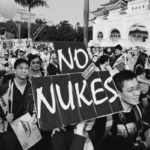Last month, the Union of Concerned Scientists (UCS) put out a reportentitled The Nuclear Power Dilemma: Declining Profits, Plant Closures, and the Threat of Rising Carbon Emissions that calls for offering subsidies to unprofitable nuclear power plants. Not surprisingly, it has been widely welcomed by nuclear advocates, who interpret the report as essentially saying “yes to nuclear power” in order to reduce carbon emissions.
But that interpretation misses the many important but less prominent insights in the UCS report.
Nuclear power plants are associated with significantly less carbon dioxide emitted per unit of electricity produced when compared to fossil fuel plants, even when including the emissions associated with the fuel chainrequired to generate nuclear energy. Therefore, the report’s basis for argument—if utilities were to replace “existing nuclear plants with natural gas and coal rather than low-carbon sources,” then it would compromise “our ability to achieve the deep cuts in carbon emissions” (p. 1)—is obvious. Whether nuclear plants would be replaced by fossil fueled plants is questionable.
Nuclear plants are hugely expensive, and it has been known for a while that they are not an economically competitive choice. Thus, building new nuclear plants makes no sense. In the UCS report too, the power planning model used does not recommend constructing new nuclear plants, even at the highest assumed price of carbon. The authors, unfortunately, do not highlight this outcome of their modeling, sidestepping its implications by not “assessing the potential role of new nuclear plants in meeting long-term emissions reduction targets” (p. 12).
For decades, nuclear advocates had a comforting response: although expensive to build, nuclear plants are cheap to operate and profitable in the long run. That is no longer true. Several nuclear plants have been shut down because the utilities operating them are losing money. As shown by the UCS report and similar studies, many more are likely to be shuttered.
So, the question in essence is how to deal with a dying source of electricity generation in the United States. Globally, the share of nuclear energy in the world’s electricity generation has been declining continuously since 1996. The UCS report is a plea to keep the nuclear industry on life support by states providing subsidies to nuclear power plants that are not profitable, provided the operators of the nuclear plants and the states play by some rules. Regardless of these subsidies, it remains the case that over the next few decades, the reactor fleet will have to be retired. Some of these reactors are nearly half a century old, and some have a checkered past.
Many others have demanded that states subsidize nuclear plants, and there is even a tool kit to help plant owners to continue profiting at public expense. It is the imposition of various requirements that distinguishes the UCS report from the rest of the chorus—and unfortunately the media has by and large highlighted the call for subsidies without the conditions. The conditions are: “Require plant owners to open their financial books and demonstrate need”; “make financial support for distressed plants temporary [and] periodically assess whether continued support is necessary and cost effective”; “Ensure that qualifying plants maintain strong safety performance”; “Strengthen renewable energy and efficiency standards”; “Develop transition plans for affected workers and communities”; and state “requirements [on resources subject to state jurisdiction, such as the use of local water supplies for cooling and the impact of cooling-water discharges] need to be vigorously enforced”.
These requirements are not easy to meet, and other proponents of nuclear subsidies are, in some cases, undermining them. The Nuclear Energy Institute “has proposed merging the highest and second-highest safety ratings”—measures of plant safety produced by the Nuclear Regulatory Commission—which “would effectively render the rating meaningless” (p. 24). In Connecticut, the Millstone nuclear plant’s “owner refused to make a disclosure” when seeking subsidies (p. 41).
These subsidies are being offered to an industry that has profited enormously in the past from direct and indirect subsidies. As the Illinois attorney general explained, current subsidy demands “amount to a third round of subsidies for these plants.”
Let us return to the most basic assumption needed for the argument for subsidies to stick, namely that utilities would replace shut down nuclear plants with fossil fueled plants. This is possible but by no means necessary, especially with continued falling costs for renewable energy and storage technologies. The energy industry is changing so rapidly that what the UCS report attempts, to forecast costs and plan over multi-decadal periods, is all but impossible to do with any degree of certainty.
Further, the report’s inputs to the electricity planning model are already outdated. For example, the central cost figures it uses for nuclear reactor costs are significantly lower than the costs of the two reactors currently being constructed in the state of Georgia. In contrast, costs of solar PV plants and wind turbines are significantly higher than the most recent numbers. Renewables are not just getting cheaper, they are also quick to construct.


